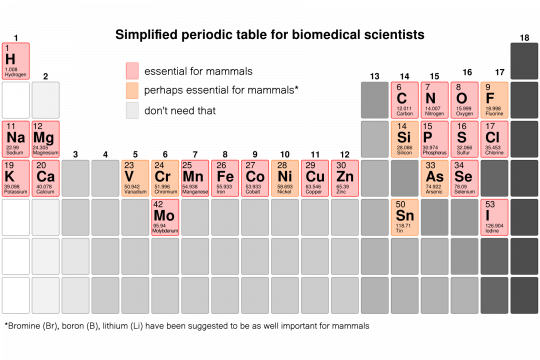Essential elements for life science

Here is my version of a simplified periodic table for life scientists. A few years back, my son learned the complete periodic table by heart up to element 118 (Oganesson). He found it funny that I only knew the first two rows. I am not embarrassed, even though I don't even remember the first two rows entirely. There are elements that I almost never encounter during my work, such as aluminium. Yes, I know that aluminium is used as an adjuvant for immunization. But then, we can't even agree on whether to spell this element "aluminium" or "aluminum"! And I would even forget Beryllium if it wasn't for the fact that I once have been gemstone hunting for Beryll (which you can find in Finland). At work I come across no more than perhaps 11 elements (which make up more than 99.5% of the human body). The question of how many elements are essential for human life is not easy to answer. It's somewhere between 19 and 29. Why are there so many elements with an unknown status? Some of the "controversial" elements might not be strictly essential for life, but still necessary for good health. Where to draw the border? And then there is the problem of how to experimentally prove essentiality. Many of the controversial elements are so-called ultra-trace minerals, and it is very difficult to rear experimental animals in an environment that is completely devoid of even the smallest trace of these elements (https://en.wikipedia.org/wiki/Biological_roles_of_the_elements).



